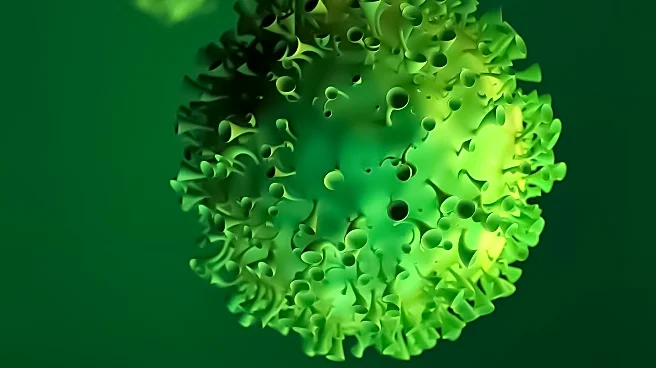What's Happening?
NanoViricides, Inc. has reported promising results for its antiviral drug NV-387 in treating measles infections. The drug demonstrated strong antiviral activity in cell culture studies and humanized animal
models, significantly increasing survival rates and protecting lung tissue from damage. NV-387 acts by mimicking heparan-sulfate proteoglycan structures, which are used by many viruses to attach to cells. This mechanism allows NV-387 to bind and neutralize the virus, preventing infection. The drug has completed Phase I clinical trials, showing safety and tolerance in healthy subjects. With measles outbreaks increasing, NV-387 could play a crucial role in combating the disease, especially as the virus evolves and challenges existing vaccines.
Why It's Important?
The development of NV-387 is significant as measles outbreaks threaten the U.S.'s measles elimination status. The drug offers a potential treatment for measles, which is highly contagious and requires over 95% vaccination coverage to control. NV-387's ability to protect lung tissue and reduce systemic infection could be vital for patients with weakened immune systems who cannot benefit from vaccination. As measles variants emerge with potential resistance to current vaccines, NV-387 provides a new avenue for treatment, addressing public health challenges and offering hope for controlling the disease's spread.
What's Next?
NanoViricides plans to advance NV-387 into Phase II clinical trials and seek non-dilutive grants for further development. The company aims to obtain FDA licensure for NV-387 as a broad-spectrum antiviral, targeting various respiratory viral infections. Continued research and collaboration with regulatory bodies will be crucial for bringing NV-387 to market as a viable treatment option for measles and other viral diseases.
Beyond the Headlines
NV-387's development highlights the need for innovative antiviral treatments as viruses evolve and challenge existing medical solutions. The drug's unique mechanism of action could pave the way for new therapeutic approaches, influencing future drug development strategies and public health policies.











